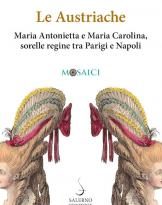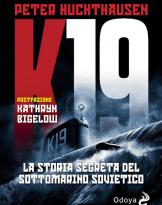Anna Sandri - Silvia Zanardi
Ed. Linea, Padua 2022
Pag. 141
On 19 March 1914 “Venice lived, without knowing it, the last months of serenity. War was upon us and, even before Italy entered the conflict, the city would have paid the price of the international situation more than others." Furthermore, the new century had added another beauty to those already known throughout the world: the Lido which, over the years, became so famous as to become, for those who went to Venice, “the first, or the indispensable, thing to see.[…] It was modernity in a time when everything was very fast and today was already the future; it was the frivolous pleasure of the leisure and elegance of a season which was soon to turn into the mourning of war. ”
So the authors, journalists both, introduce us to this story of an appointment with destiny, destiny that “shuffles the cards, then puts them on the table: once the game has begun, it is impossible to go back. […] On March 19, 1914, in Venice, fate placed the cards on the table at 17.10 pm, when vaporetto number 7 of the municipal inland navigation company let go of its moorings from the Santa Maria Elisabetta wharf on the Lido and set its bow towards the gardens." There are about sixty people on board. “At the same instant in which the vaporetto begins the crossing, from the Orfano canal, to the left, a torpedo boat is advancing towing a barge. A seaplane has just taken off from the Arsenale.” In fact, the first squadron of seaplanes of the Regia Marina was based in the Arsenale. A few minutes later the torpedo boat swoops down on the vaporetto and rips open the left side with its spur, causing it to sink in a few seconds.
"A minute was enough for everything to happen: the torpedo boat sounding the alarm with the siren, the vaporetto first trying to slow down and then trying to give the "cars full speed ahead" to avoid the impact. There is nothing to be done: the crash is devastating.” The rescue machine immediately sets in motion. Some will be saved, some will not. Among those who will not make it is the Lieutenant of Vascello Luigi Bossi who, just as he is about to be saved on the torpedo boat, decides to head towards a woman who was drowning: "He dies in a futile attempt to save a life." Waiting for him when the vaporetto arrived was his wife Ada, who waited for him in vain. There are many stories reported in this story, such as that of Elena Fortunata Mingardi, who worked in the Corbella Laundry. “There will be no boyfriends crying over Fortunata's coffin, but there will be a small world of daily affection.”
Angelo Samassa, entrepreneur, Peter Merchinskij, Russian vice-consul and Professor Agostino De Marchi who “he never married so he could devote himself to school”thus sacrificing his private life in order to fulfill his mission as a teacher. There are also survivors in this tragedy. “Surviving is not easy. You spend the rest of your life wondering how, why; you feel indebted to those close to you who didn't make it.” And there is the desperation of the family members.
At 16:15 the next day the vaporetto is pulled up, returning other bodies: among these that of the entrepreneur Giuseppe Grisostolo. “Fate had put him on the same vaporetto as Angelo Samassa, who was his competitor but first colleague and friend.”
In the Basilica of Saints John and Paul, “Monday 23 March 1914, under a leaden sky, Venice mourns its dead, in what the local newspapers will define a ceremony never seen before, for solemnity and participation.” Of the sixty-three people whom fate had arranged to meet on vaporetto number 7 that day, there were sixteen dead and fourteen injured.
The trial, which will see the helmsman of the vaporetto and the commander of the torpedo boat as defendants, will end with the sentence of each to two years' imprisonment and a 1.500 lire fine.
In future memory of this tragedy unknown to most, as it happened when “there were already the shots from Sarajevo in the air”, a plaque is placed in the cemetery of San Michele in Isola - in memory of Sarah McLean Drake and Janet Drake, mother and daughter, also victims of that disaster - which prompted the authors to reconstruct what happened, in the lagoon, that day.
“Sarah and Janet asked us to be remembered, and we listened to them: the stones, in silence, have a voice.”
Gianlorenzo Capano












